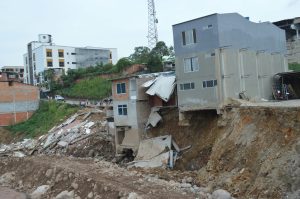Living Sector: Addressing Capacity Bottlenecks and Shortages
The Living Sector is a crucial part of any society. It encompasses the areas of housing, transportation, utilities, and other essential services that play a significant role in our daily lives. However, as the population continues to grow and urbanization becomes more prevalent, many countries face the challenge of addressing capacity bottlenecks and shortages in the Living Sector. These bottlenecks and shortages can have severe implications, affecting the quality of life, economic growth, and social stability. In this article, we will take a closer look at the factors contributing to capacity bottlenecks and shortages in the Living Sector and explore potential solutions to overcome these challenges.
Understanding Capacity Bottlenecks and Shortages in the Living Sector
Capacity bottlenecks and shortages in the Living Sector refer to situations where demand for essential services exceeds the available supply. This can occur due to various reasons, such as rapid population growth, inadequate infrastructure, and inefficient service delivery systems. For instance, in developing countries, the increasing migration from rural areas to cities has resulted in a strain on the existing infrastructure, leading to overcrowding and delays in service delivery. Similarly, in developed countries, aging infrastructure and limited investment in maintaining and upgrading essential services have resulted in capacity bottlenecks and shortages.
The Impact of Capacity Bottlenecks and Shortages
The consequences of capacity bottlenecks and shortages in the Living Sector can be far-reaching. Firstly, it can lead to a decline in the quality of life. For instance, inadequate housing or lack of access to clean water and sanitation can result in health issues, impacting the overall well-being of individuals. It can also affect economic growth, as capacity bottlenecks and shortages can limit the availability of essential services, hindering business activities and investments. Moreover, it can exacerbate social inequalities and create social unrest, as low-income individuals and marginalized communities are often the most affected by capacity bottlenecks and shortages.
The Need for Sustainable Solutions
Addressing capacity bottlenecks and shortages in the Living Sector requires a multi-faceted approach that takes into account various factors such as population growth, urbanization, and infrastructure development. The solution must also be sustainable, considering the long-term impacts on the environment and society. Here are some potential solutions that can help alleviate the challenges posed by capacity bottlenecks and shortages in the Living Sector.
Improving Infrastructure
One of the primary reasons for capacity bottlenecks and shortages in the Living Sector is inadequate infrastructure. Developing or upgrading infrastructure such as roads, utilities, and public transportation can significantly enhance the capacity of essential services. This could involve investments in new infrastructure or the modernization of existing systems to improve efficiency and accommodate growing demand. Additionally, incorporating sustainable practices in infrastructure projects can reduce the environmental impact and ensure the long-term viability of essential services.











